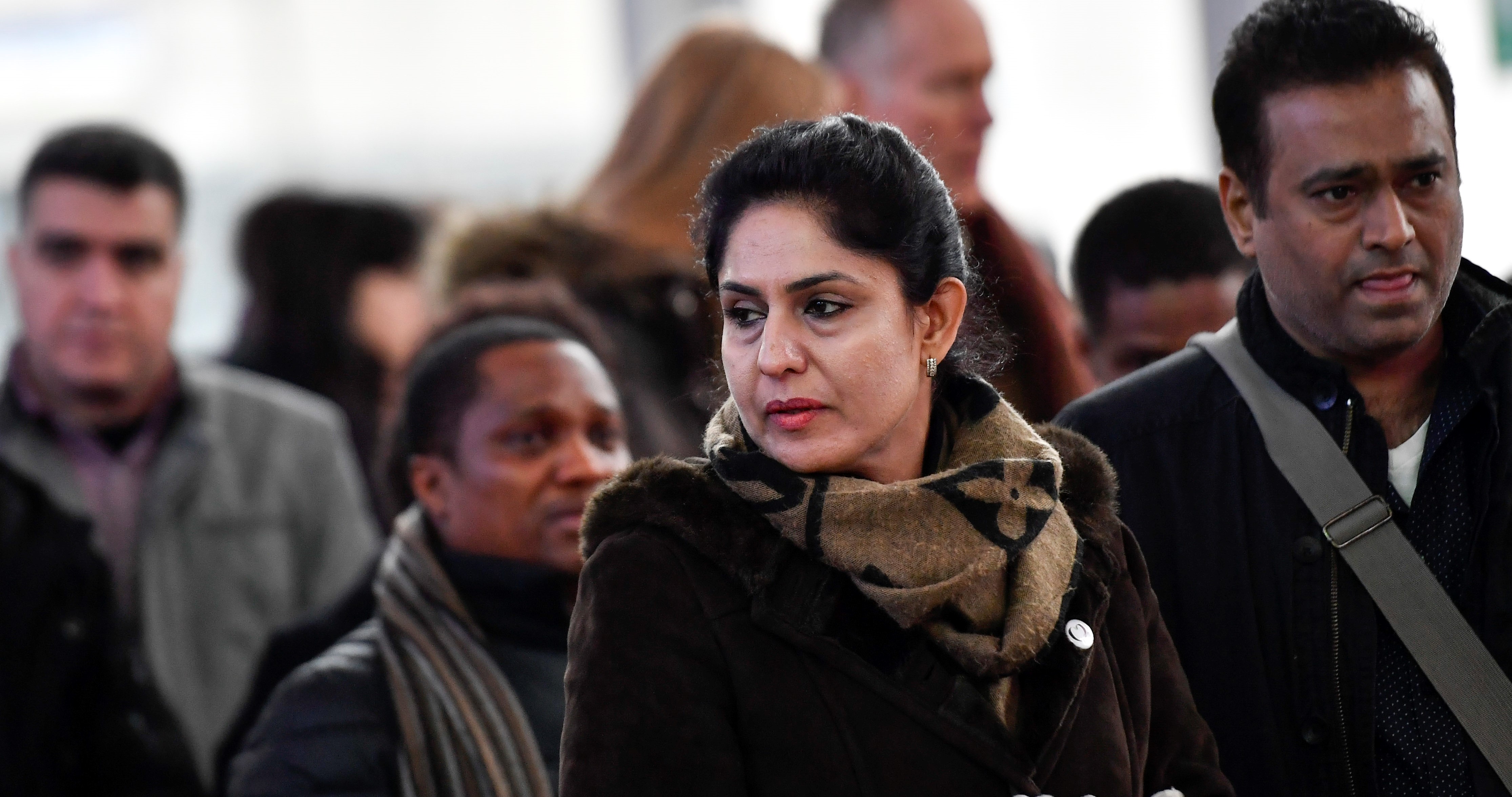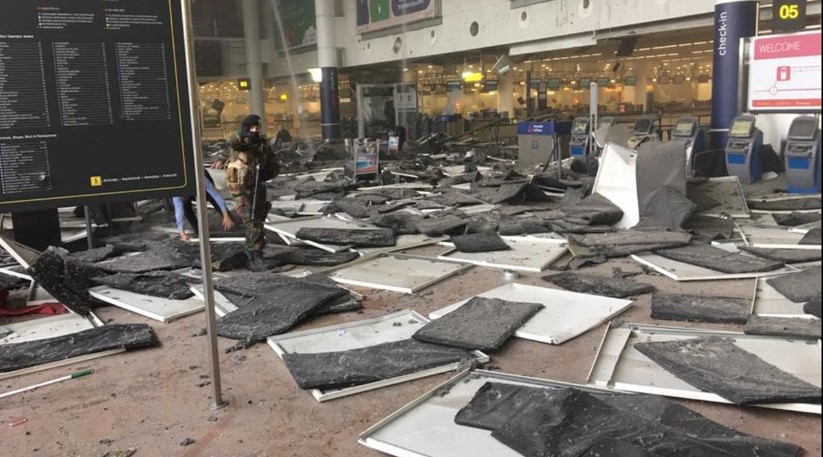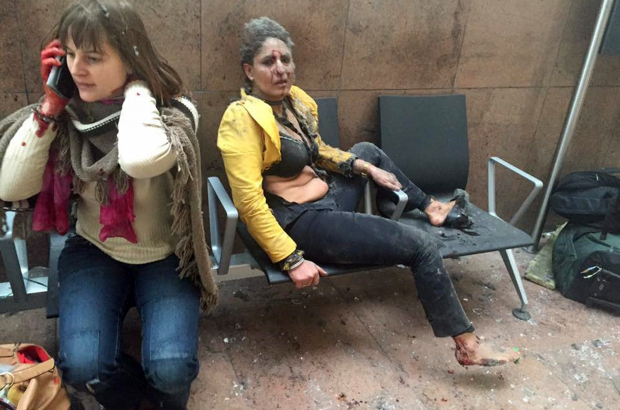- Daily & Weekly newsletters
- Buy & download The Bulletin
- Comment on our articles
Five years later: The women in the photo that went round the world
It was the photo that went around the world on 22 March 2016: Two women who survived the terrorist attack at Brussels Airport, one splayed across seating, her bright yellow jacket in shreds, another with a bloody hand talking on her mobile phone.
The photo of Stefanie De Loof of Belgium (left), a co-ordinator for Doctors Without Borders, and JetAirways flight attendant Nidhi Chaphekar was taken by Ketevan Kardava, a Brussels-based news correspondent from Georgia. Uninjured in the attacks, she waited inside a photo booth until she was sure there would be no third explosion. She then took photographs of the aftermath until she was ushered out of the area.
The women in her most famous photo took very different paths in dealing with their newfound celebrity in the weeks and months that followed.
Chaphekar was more seriously injured, but once she healed, she took part in many interviews and TV appearances in her homeland of India and around the world. She also wrote a book about the experience, published last year, and is working on a second.
On a stopover between Mumbai and New York, she had a very different take on the photograph from the very beginning then did De Loof. “I saw it as something very positive,” she told Het Nieuwsblad in the run-up to today, the fifth anniversary of the terrorist attacks. “My family had heard about the bombing, but I was off the radar for 10 hours. They saw that photo, and they knew I was still alive.”

Nidhi Chaphekar and her husband at the 2018 memorial service at Brussels Airport
©Dirk Waem/BELGA
Today, the photograph gives her courage, she said. “It gives me the power to see how far I’ve come. And I don’t ever want to forget that.”
Chaphekar lives in Mumbai with her husband and two teenage children. No longer able to work as a flight attendant because of her injuries, she was given another job with JetAirways. But two years ago, the airline went bust.
She has not been able to find another job in the industry. “Because of medical difficulties, I’m never hired,” she told Het Nieuwsblad. “The injury to my foot means I cannot be on my feet for longer than six hours. I tried to get work at four or five other places, but they kept saying: ‘Why don’t you just stay home and take it easy? Or why not become a motivational speaker?’ They don’t seem to understand that I can’t earn a salary that way.”
Five years later, she is still getting physical therapy and cognitive training, she said. “After the attack, I noticed that my memory was affected; I have a hard time remembering some words or pieces of information. So I’m training it now. I’m also writing another book, about how my life has changed. But I don’t know if it will be published. I’m writing it more for myself, to put my time to some use.”

The two women survived the attack on Brussels Airport that killed 16 people and injured hundreds more ©Jef Versele/Facebook
De Loof, meanwhile, took the opposite approach, rejecting all of the attention she received because of the photograph. She was on her way to Haiti that morning in 2016 for her job with the Belgian chapter of Doctors Without Borders.
She was saved from suffering much worse injury because of chocolate and cheese – she had too much in her baggage and had left the check-in area to shuffle some things around. After the second bomb went off, she realised what was happening and crawled under the metal seating, placing her luggage around her. She thought terrorists might be walking around shooting.
“I played dead until things calmed down,” she told VRT. “Suddenly, I thought about my mum, who had just dropped me off at the airport. I called her.” That’s when Kardava snapped the famous photo.
In no time, the photo was everywhere, and De Loof – in the hospital with light injuries – began getting calls from friends and family. In a few hours, journalists began to call – from all over the world. She refused all requests, but the next day decided to give exactly two interviews: One to the Flemish press, and one to the French-speaking press.
“And after that I took a train to Amsterdam and left for Haiti,” she told VRT. “Requests kept coming from all over the world. But in Haiti, it was totally different. People there talked about the photo for one day. After that, it was business as usual, which often means just surviving. It’s another world there than here.”
While she spoke to VRT radio this week, De Loof is still reluctant to be in the public eye, avoiding social media and, in the beginning, even large events. “I wanted to absolutely avoid becoming a media figure. I was worried that my words would be misused. It was an awful and cowardly attack, but to be honest, what I saw and experienced in Haiti was worse. That was what really changed my life. It was my work for Doctors Without Borders that made me see life differently. I was totally not interested in media attention – quite the opposite.”
Photo top ©Ketevan Kardava



















